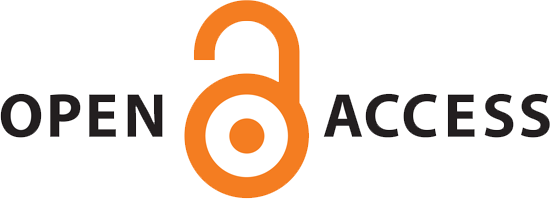Temperament and Its Impact on Noise Sensitivity, Hyperacusis and Noise Annoyance
Abstract
Background and Aim: Previous research has linked personality traits to noise perception, yet the role of temperament, a fundamental determinant of emotional and sensory processing, remains insufficiently explored. This study aimed to examine the impact of various temperament types on hyperacusis, noise sensitivity, and noise annoyance among industrial workers.
Method: A cross-sectional study was conducted among 320 participants aged 20–60, selected via strict criteria. Variables were assessed using validated questionnaires, including Mojahedi Temperament, Weinstein Noise Sensitivity, Noise Annoyance, and Khalfa Hyperacusis. Data were analyzed using SPSS, with descriptive statistics, correlation, ANOVA, and MANCOVA employed for relationships and group differences.
Results: The results indicated that Melancholic individuals exhibited the highest hyperacusis (Mean = 6.01), sensitivity (Mean = 7.37), and annoyance (Mean = 8.19), whereas phlegmatic individuals showed the lowest sensitivity (Mean = 2.82,) and annoyance (Mean = 3.16). The dryness-wetness temperament dimension correlated positively with hyperacusis (r = 0.275, p < 0.01) and annoyance (r = 0.184, p < 0.05), indicating greater noise reactivity in individuals with drier temperaments. The effect of temperament on hyperacusis (η² = 0.11) was stronger than its impact on sensitivity (η² = 0.03) and annoyance (η² = 0.07).
Conclusion: In conclusion, this study highlights the significant role of temperament in shaping individuals' responses to noise, with melancholic and choleric individuals exhibiting the highest levels of noise sensitivity and annoyance, and phlegmatic individuals reporting the lowest levels. These findings underscore the necessity of personalized noise mitigation strategies in occupational settings to protect worker health.
2. Fink D. What is the safe noise exposure level to prevent noise-induced hearing loss? Journal of exposure science & environmental epidemiology. 2025;35(1):124-8. [DOI:10.1038/s41370-024-00660-3]
3. Abbasi M, Derakhshan J, Darabi F, Abdullah MN, Mahmood EA, Eskandari T, et al. The impact of noise-induced hearing loss on individual job performance: exploring the role of aggression and work-related quality of life. BMC psychology. 2024;12(1):624. [DOI:10.1186/s40359-024-02113-w]
4. Mehri A, Alimohammadi I, Ebrahimi H, Hajizadeh R, Roudbari M. Effect of traffic noise on mental performance with regard to introversion and task complexity. Applied Acoustics. 2018;132:118-23. [DOI:10.1016/j.apacoust.2017.11.019]
5. Shepherd D, Heinonen-Guzejev M, Hautus MJ, Heikkilä K. Elucidating the relationship between noise sensitivity and personality. Noise and Health. 2015;17(76):165-71. [DOI:10.4103/1463-1741.155850]
6. Stansfeld S, Clark CR, Jenkins L, Tarnopolsky A. Sensitivity to noise in a community sample: I. Measurement of psychiatric disorder and personality. Psychological medicine. 1985;15(2):243-54. [DOI:10.1017/S0033291700023527]
7. Khalfa S, Dubal S, Veuillet E, Perez-Diaz F, Jouvent R, Collet L. Psychometric normalization of a hyperacusis questionnaire. Orl. 2002;64(6):436-42. [DOI:10.1159/000067570]
8. Kashani MM, Dehabadi PK, Karamali F, Akbari H. Validation of Persian version of hyperacusis Questionnaire. Noise and Health. 2022;24(114):191-7. [DOI:10.4103/nah.nah_16_22]
9. Ellermeier W, Eigenstetter M, Zimmer K. Psychoacoustic correlates of individual noise sensitivity. The journal of the acoustical society of America. 2001;109(4):1464-73. [DOI:10.1121/1.1350402]
10. Weinstein ND. Individual differences in reactions to noise: a longitudinal study in a college dormitory. Journal of applied psychology. 1978;63(4):458. [DOI:10.1037/0021-9010.63.4.458]
11. Guski R. Personal and social variables as co-determinants of noise annoyance. Noise and health. 1999;1(3):45.
12. Dornic S, Ekehammar B. Extraversion, neuroticism, and noise sensitivity. Personality and Individual Differences. 1990;11(9):989-92. [DOI:10.1016/0191-8869(90)90283-W]
13. Belojevic G, Jakovljevic B. Factors influencing subjective noise sensitivity in an urban population. Noise and Health. 2001;4(13):17-24.
14. Strelau J. Temperament. Encyclopedia of personality and individual differences. 2020:5388-407. [DOI:10.1007/978-3-319-24612-3_446]
15. Mehrabian A. Relations among personality scales of aggression, violence, and empathy: Validational evidence bearing on the Risk of Eruptive Violence Scale. Aggressive Behavior: Official Journal of the International Society for Research on Aggression. 1997;23(6):433-45. [DOI:10.1002/(SICI)1098-2337(1997)23:6<433::AID-AB3>3.0.CO;2-H ]
16. Cloninger CR. Temperament and personality. Current opinion in neurobiology. 1994;4(2):266-73.
17. Steiner R. The four temperaments: SteinerBooks; 1985.
18. Bennett A, Bennett L. The temperament God gave you: Manchester, New Hampshire: Sophia Institute Press; 2005.
19. Watson D, Clark LA. Negative affectivity: the disposition to experience aversive emotional states. Psychological bulletin. 1984;96(3):465. [DOI:10.1037/0033-2909.96.3.465]
20. Ekstrand D. The four human temperaments. Retrieved on. 2015;20.
21. Salvi R, Chen G-D, Manohar S. Hyperacusis: Loudness intolerance, fear, annoyance and pain. Hearing Research. 2022;426:108648. [DOI:10.1016/j.heares.2022.108648]
22. Mojahedi M, Naseri M, Majdzadeh R, Keshavarz M, Ebadini M, Nazem E, et al. Reliability and validity assessment of Mizaj questionnaire: a novel self-report scale in Iranian traditional medicine. Iranian Red Crescent Medical Journal. 2014;16(3). [DOI:10.5812/ircmj.15924]
23. Alimohammad I, Azkhosh, Sabet. Reliability any Validity of the Persian Translation of the Weinstein Noise Senditivity scal The validity and validity of the Persian translation of Weinstein's voice sensitivity test. Psychological research. 2006;17(9):74-87.
24. Abbasi M, Yazdanirad S, Zokaei M, Falahati M, Eyvazzadeh N. A Bayesian network model to predict the role of hospital noise, annoyance, and sensitivity in quality of patient care. BMC nursing. 2022;21(1):243. [DOI:10.1186/s12912-022-00948-5]
25. Shepherd D, Heinonen-Guzejev M, Hautus MJ, Heikkilä K. Elucidating the relationship between noise sensitivity and personality. Noise & health. 2015;17(76):165. [DOI:10.4103/1463-1741.155850]
26. Madvari RF, Sefidkar R, Dameshghi H, Bidel H, Laal F, Nodoushan MJ. Association between noise exposure and noise annoyance with communication skills and cognitive triad among mine workers, Iran. Journal of Shahrekord University of Medical Sciences. 2022;25(1):16-22. [DOI:10.34172/jsums.2023.722]
27. Costa Jr PT, McCrae RR. Neo Personality Inventory: American Psychological Association; 2000.
28. Hogan R, Johnson J, Briggs S. Handbook of personality psychology: Academic Press; 1997.
29. Childs G. Understand Your Temperament!: A Guide to the Four Temperaments-Choleric, Sanguine, Phlegmatic, Melancholic: Rudolf Steiner Press; 2013.
30. Eysenck HJ, Eysenck SB. The biological basis of personality. Personality Structure and Measurement (Psychology Revivals): Routledge; 2013. p. 49-62. [DOI:10.4324/9780203766804]
| Files | ||
| Issue | Articles in Press | |
| Section | Research Article(s) | |
| Keywords | ||
| Temperament hyperacusis noise sensitivity noise annoyance occupational noise exposure | ||
| Rights and permissions | |

|
This work is licensed under a Creative Commons Attribution-NonCommercial 4.0 International License. |






